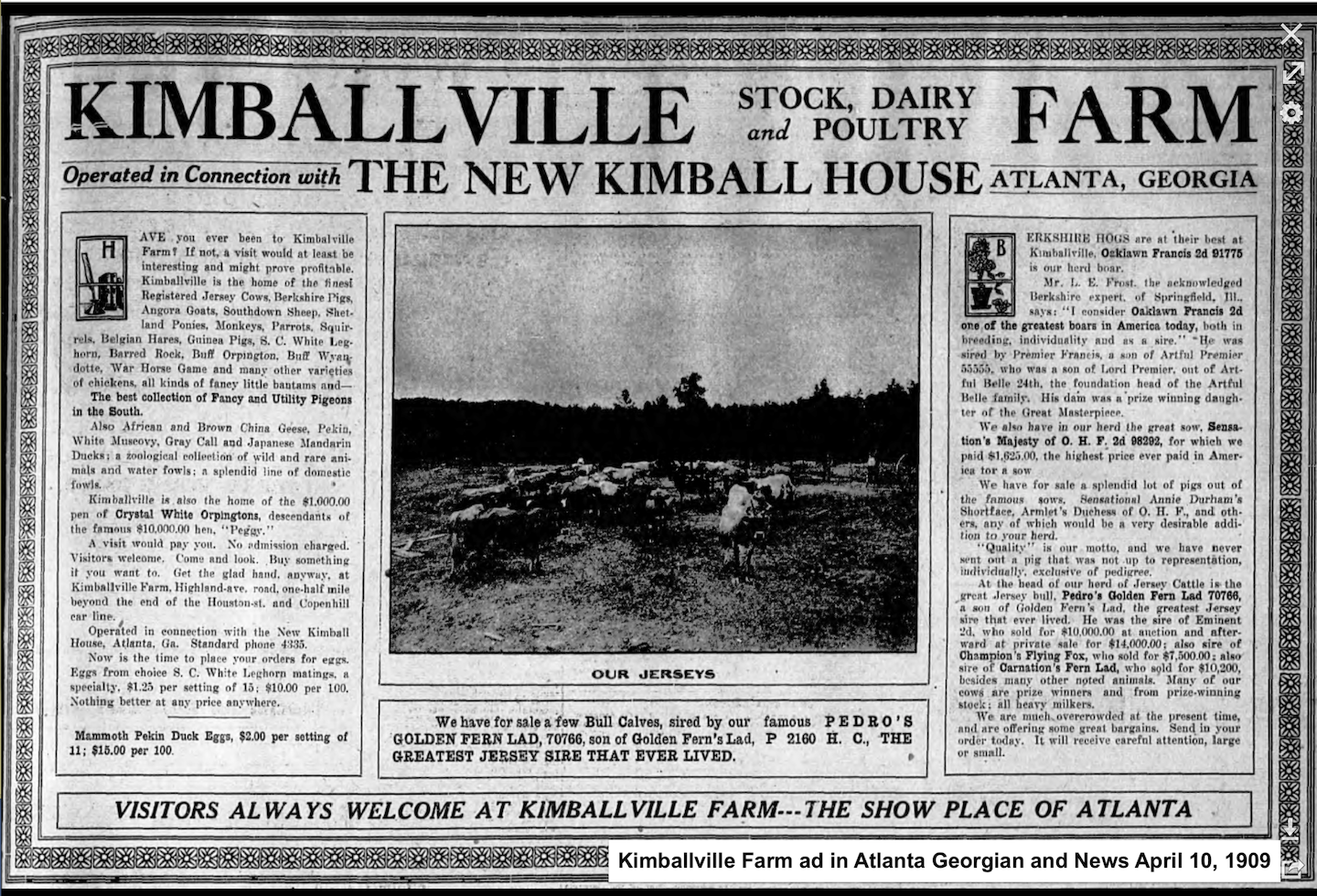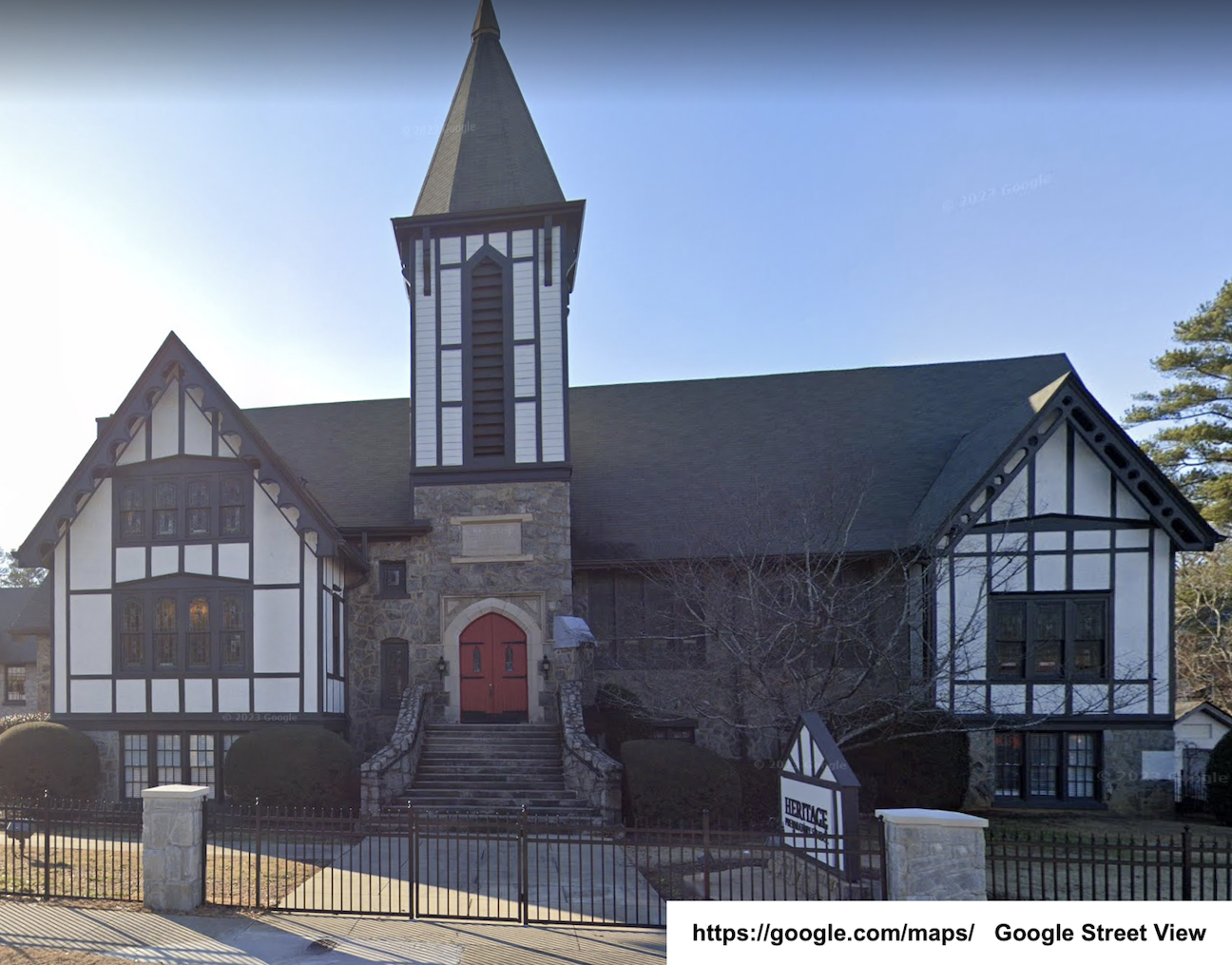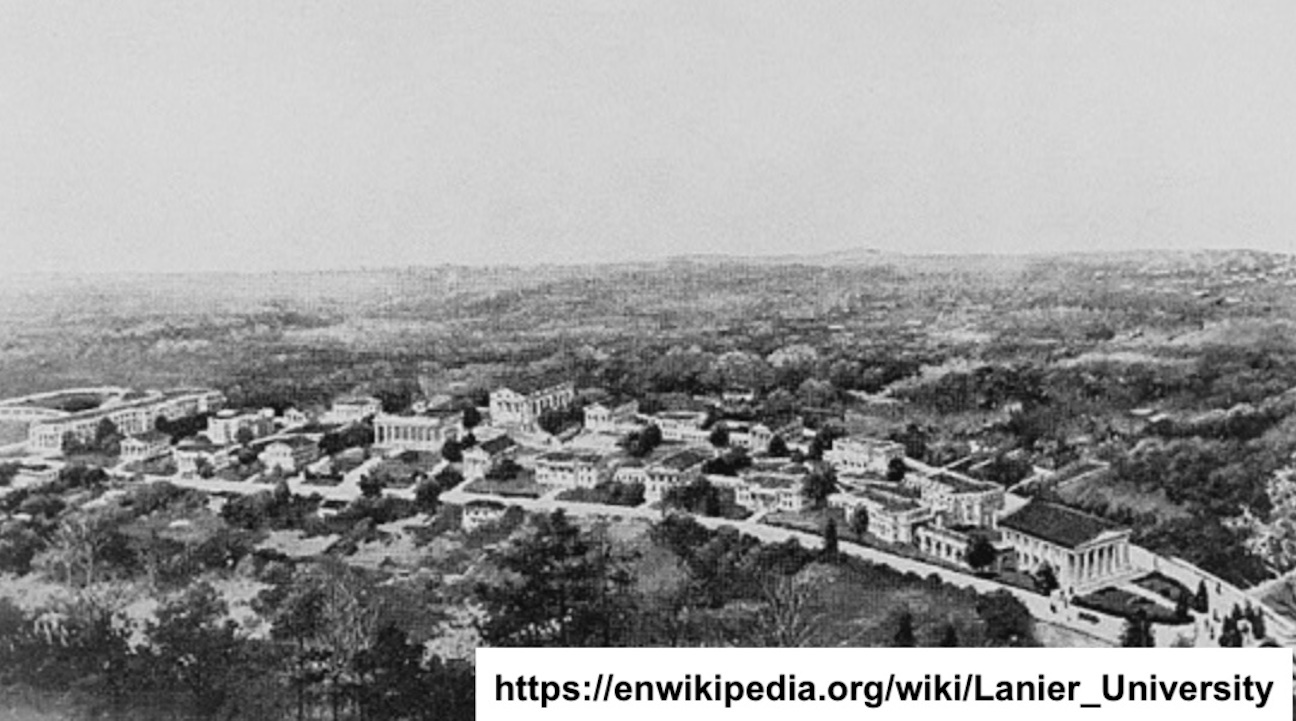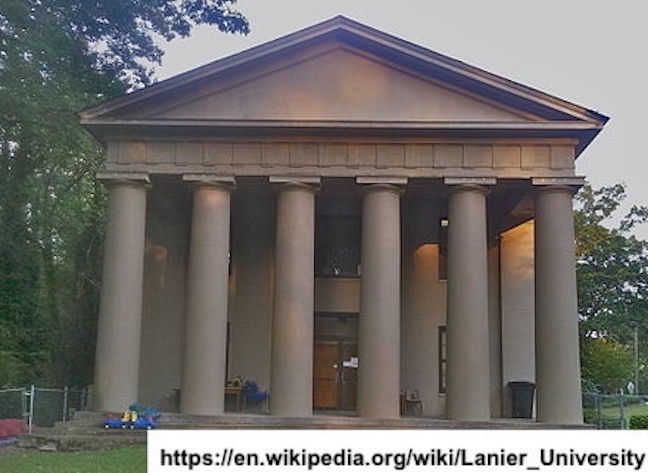
Farms and Early Development - Before the 1920s
Easton
Most of Atlanta’s first settlers were from Northeast Georgia, although others came from the Carolinas and Virginia. Some settled in Easton, a farming community at the present intersection of Piedmont Avenue and Monroe Drive. Industrious farmers whose land lay along major creeks established water-powered saw and grist mills. Easton farmers ginned their cotton and ground their corn at Walker’s Mill, across from today’s Ansley Mall.
Some milestones in Easton’s existence:
- 1876: train started stopping in Easton; from 1879-1931 the Airline Belle line ran between Atlanta Terminal Station and Toccoa, Georgia
- 1888: population reaches 100
- 1904: Easton post office closes
- 1911: development begins in Ansley Park and Virginia Highland
- 1911: Plaster Bridge Road paved
- 1917: Plaster Bridge Road is renamed Piedmont Road
Kimballville Farm
Kimballville Farm was a large farm located east of North Highland Avenue. It was renowned for its large collection of “the finest livestock” and “the most modern equipment”. There is a road in the area, Zimmer Avenue, named after the owner as of 1909. The farm was a landmark in what was then a rural area. Visitors were invited to come out from Atlanta and spend a leisurely day on the farm and buy livestock or farm products.

Rock Spring School House and Church
In winter 1868, Joel Mable, a devout Scottish Presbyterian, organized the Union Sunday School in the Rock Spring School House. The school was located near the current intersection of Morningside Drive and East Rock Springs Road. Two years later, 27 members organized Rock Spring Presbyterian Church. Their names – Cheshire, Reeder, Luckie, Plaster and others – are familiar to this century’s motorists. The first church, a white frame building without a steeple, was built in 1871 on the church’s current site at Piedmont Avenue and Rock Springs Road.
 Rock Springs Presbyterian Church
Rock Springs Presbyterian Church
Lanier University
Lanier University, located in Morningside at the intersection of University and Spring Valley, was founded by Charles Lewis Fowler in 1917 and named after Sidney Lanier, an American poet, musician, and author. Lanier was planned as the first co-ed Baptist college.
Subsequently, the property was owned briefly by the Ku Klux Klan. When it sold in 1922, it operated as a synagogue. In 1949, Congregation Shearith Israel purchased the property and remains there today; the Canterbury School has occupied Arlington Hall since 2009.
Architectural plans for Lanier University; only Arlington Hall (the last structure on the right) was built – as a replica of the Custis-Lee Mansion in Virginia.


